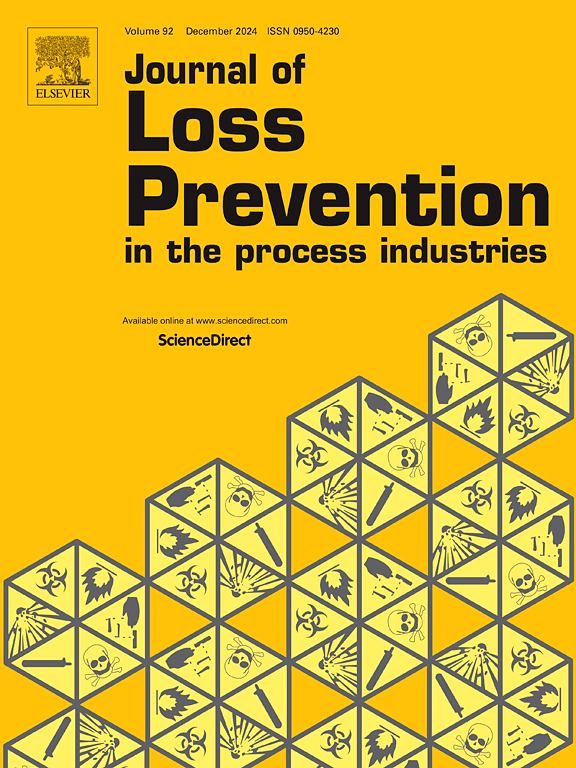Natural gas leakage detection from offshore platform by OGI camera and unsupervised deep learning
IF 3.6
3区 工程技术
Q2 ENGINEERING, CHEMICAL
Journal of Loss Prevention in The Process Industries
Pub Date : 2024-10-09
DOI:10.1016/j.jlp.2024.105449
引用次数: 0
Abstract
Natural gas leak from offshore platform poses a potential to cause explosion disaster and bring significant causalities and economic losses. Existing deep learning-based leak detection approaches are limited by the requirement of a large number of labeled leak datasets, and also has worse performance in the complex and changeable marine environment. This study proposes a detection approach of natural gas leakage from offshore platform by integrating optical gas imaging (OGI) camera and unsupervised deep probability learning. In this approach, unsupervised deep learning is applied to learn the changeable infrared features of offshore platform, and variational Bayesian inference is integrated to provide the larger epistemic uncertainty contour corresponding to the infrared natural gas plume. An epistemic uncertainty-based detection score is proposed as the detection criterion to improve the accuracy of natural gas plume detection and localization. An OGI imaging experiment of natural gas leak from offshore platform is conducted to construct the benchmark dataset. With such datasets, two pre-defined parameters, namely Monte Carlo sampling number m = 100 and dropout probability are determined to guarantee the detection accuracy and efficiency. Comparison between the proposed approach and prevalent unsupervised deep learning approach is also conducted. The results demonstrate that our proposed approach has the higher detection accuracy with AUC = 0.9753, as well as the real-time capability with inference time of 4s/frame. Overall, our proposed approach provides a more accurate and generalized approach of natural gas detection for safety monitoring and detection management of offshore platforms.
利用 OGI 摄像机和无监督深度学习检测海上平台的天然气泄漏
海上平台的天然气泄漏有可能引发爆炸灾难,造成重大人员伤亡和经济损失。现有的基于深度学习的泄漏检测方法受限于大量标记泄漏数据集的要求,而且在复杂多变的海洋环境中性能较差。本研究提出了一种结合光学气体成像(OGI)相机和无监督深度概率学习的海上平台天然气泄漏检测方法。在该方法中,应用无监督深度学习来学习海上平台多变的红外特征,并结合变异贝叶斯推理来提供与红外天然气羽流相对应的较大的认识不确定性等值线。提出了基于认识不确定性的检测评分作为检测标准,以提高天然气羽流检测和定位的准确性。为构建基准数据集,进行了海上平台天然气泄漏的 OGI 成像实验。通过这些数据集,确定了两个预定义参数,即蒙特卡罗采样数 m = 100 和丢弃概率 p=0.1,以保证检测精度和效率。此外,还对所提出的方法和流行的无监督深度学习方法进行了比较。结果表明,我们提出的方法具有更高的检测精度(AUC = 0.9753),以及实时性(推理时间为 4 秒/帧)。总之,我们提出的方法为海上平台的安全监控和检测管理提供了一种更准确、更通用的天然气检测方法。
本文章由计算机程序翻译,如有差异,请以英文原文为准。
求助全文
约1分钟内获得全文
求助全文
来源期刊
CiteScore
7.20
自引率
14.30%
发文量
226
审稿时长
52 days
期刊介绍:
The broad scope of the journal is process safety. Process safety is defined as the prevention and mitigation of process-related injuries and damage arising from process incidents involving fire, explosion and toxic release. Such undesired events occur in the process industries during the use, storage, manufacture, handling, and transportation of highly hazardous chemicals.

 求助内容:
求助内容: 应助结果提醒方式:
应助结果提醒方式:


